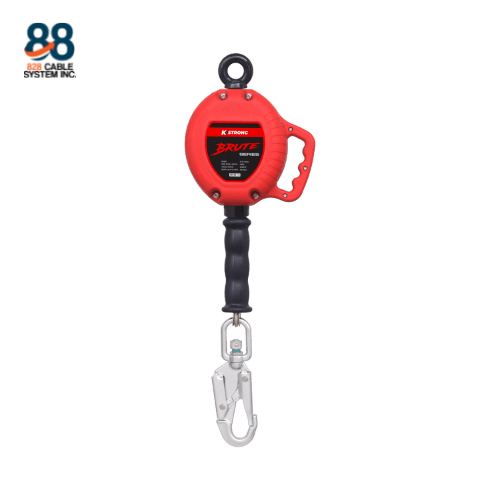In the realm of workplace safety, the adage “prevention is better than cure” holds particularly true. Nowhere is this more evident than in the realm of fall prevention, where the implementation of effective measures can save lives and prevent serious injuries. Among the arsenal of fall prevention tools, self-retracting lanyards (SRLs) stand out as a pivotal safeguard, offering both freedom of movement and reliable protection. In this guide, we’ll delve into the intricacies of self-retracting lanyards, exploring their functionality, importance, and proper usage.
What are Self-Retracting Lanyards?
Self-retracting lanyards, often abbreviated as SRLs, represent a sophisticated solution to the perpetual challenge of balancing safety with mobility in elevated work environments. Unlike traditional lanyards, which tend to be static, SRLs are equipped with an internal mechanism akin to a car’s seatbelt, allowing for the automatic retraction and extension of the lifeline. This dynamic functionality ensures that the lifeline remains taut, thereby minimizing the risk of entanglement and facilitating unhindered movement for the wearer.
How Do Self-Retracting Lanyards Work?
The functionality of self-retracting lanyards hinges on their internal mechanism, which includes a sophisticated braking system designed to activate in the event of a fall or sudden force exertion. This mechanism serves to arrest the wearer’s descent swiftly, mitigating the impact of the fall by dispersing its energy over a shorter distance. Consequently, self-retracting lanyards not only prevent falls but also reduce the severity of potential injuries, thereby enhancing overall workplace safety.
Importance of Self-Retracting Lanyards in Fall Prevention
In the realm of workplace safety, the significance of fall prevention cannot be overstated. According to statistics from the Occupational Safety and Health Administration (OSHA), falls consistently rank among the leading causes of workplace fatalities, underscoring the critical need for effective fall prevention measures. In this context, self-retracting lanyards emerge as indispensable tools, offering reliable protection against the inherent risks of working at height.
Differences Between SRLs and Traditional Lanyards
While traditional lanyards serve as rudimentary fall arrest devices, self-retracting lanyards represent a significant advancement in terms of both functionality and safety. Unlike their static counterparts, SRLs offer dynamic retraction and extension capabilities, ensuring optimal tension and mobility for the wearer. Moreover, the integrated braking system of SRLs sets them apart, enabling rapid response in the event of a fall and minimizing the potential for injury.
Proper Usage and Maintenance of Self-Retracting Lanyards
Ensuring the effective utilization of self-retracting lanyards necessitates adherence to proper usage and maintenance protocols. This includes thorough inspection before each use, with specific attention to the integrity of the lifeline and braking system. Additionally, users must receive adequate training on the correct application of SRLs in conjunction with a compatible body harness, as well as protocols for responding to fall incidents.
Takeaway
Self-retracting lanyards stand as a testament to the relentless pursuit of innovation in the realm of workplace safety. By seamlessly integrating mobility with reliable fall protection, SRLs empower workers to perform their duties at height with confidence and peace of mind. However, their efficacy hinges on proper usage and maintenance, as well as a comprehensive understanding of their functionality and importance in fall prevention. As we continue to prioritize safety in the workplace, the adoption of self-retracting lanyards represents a proactive step towards safeguarding the well-being of workers in diverse industries.

